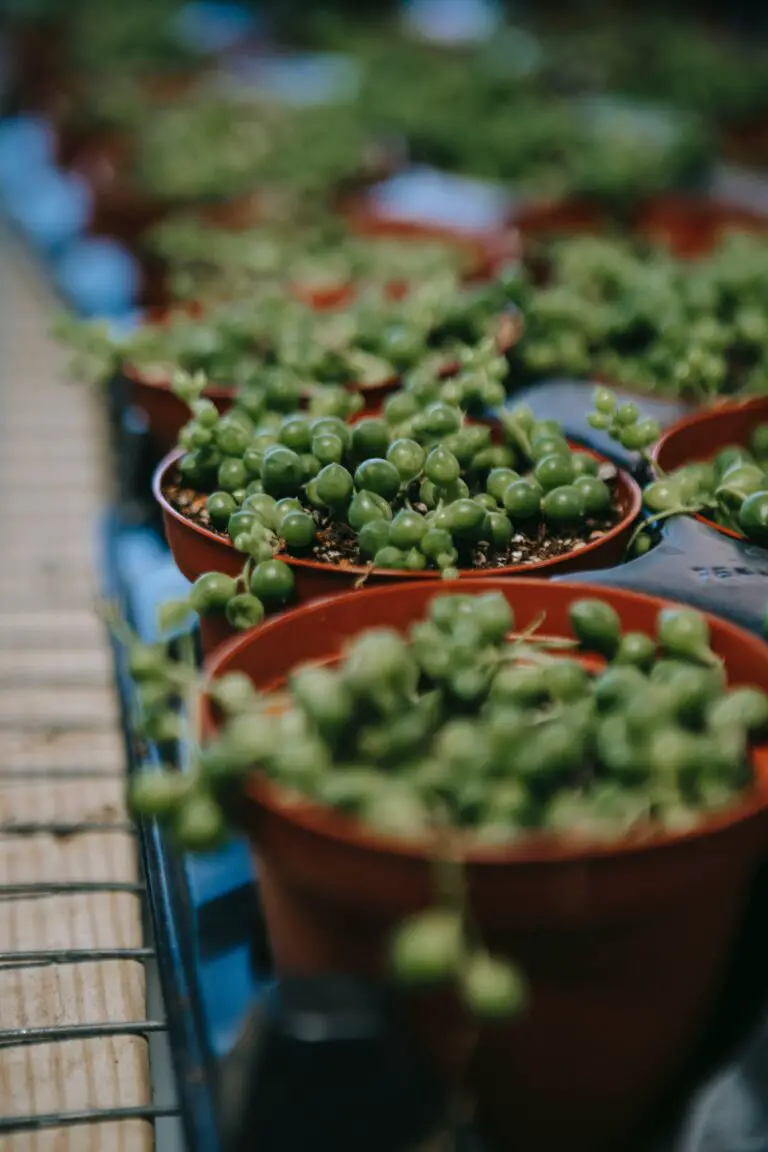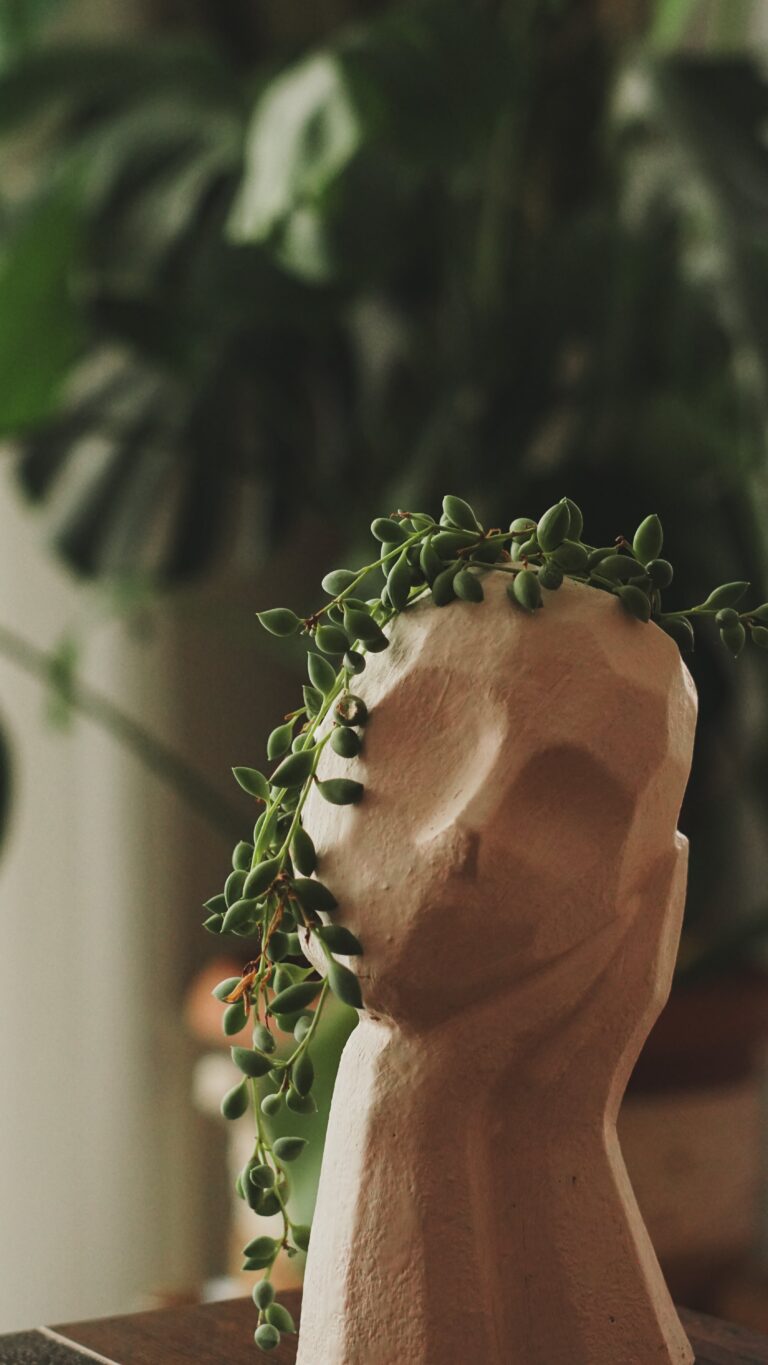Introduction to Senecio Aureus
Discover the enchanting world of Senecio Aureus, also known as Golden Ragwort, and its significance in various ecosystems. We will highlight what makes this plant unique and why it captivates the attention of gardeners, herbalists, and conservationists alike.
Embark on a botanical journey and explore the myriad of benefits that the Golden Ragwort offers. From its lively yellow blossoms that paint the fields with color to its role in traditional medicine, Senecio Aureus is more than just a pretty face.

Take a glimpse into the lives of creatures that rely on vibrant ecosystems nurtured by plants like Senecio Aureus. The harmony between flora and fauna is a testament to the importance of preserving such precious habitats.
Whether adding charm to outdoor spaces or serving as a botanical staple, Senecio Aureus enriches our lives in subtle yet powerful ways. Join us as we unveil the secrets of this golden beauty and its contribution to the world around us.
Botanical Profile of Senecio Aureus
Have you ever stumbled upon a meadow adorned with the vibrant, sunny faces of Senecio Aureus? Affectionately known as Golden Ragwort, this cheery plant holds secrets within its golden petals and lush, green foliage. It’s not just another pretty face in the wildflower crowd—this plant is an environmental powerhouse!

Let’s paint a picture of the typical dwelling of Senecio Aureus. Imagine moist, well-drained soils embracing its roots as it thrives under dappled sunlight in a woodland or along the edges of a serene stream. It’s quite the adaptable character, isn’t it? Spanning across Eastern North America, this hardy plant has chosen a wide range of habitats as its playground—from cool, temperate forests to the wetlands’ embrace. Fancy meeting Senecio Aureus in its natural habitat? You stand a good chance if you’re anywhere from Nova Scotia, zigzagging down to Florida, and then leaping across to Texas.
Golden Ragwort, with its radiant yellow blooms, is more than just a feast for the eyes. It’s a key character in the story of its ecosystem, playing a vital role in local biodiversity. By offering nectar and pollen to a bustling community of pollinators, it’s a sought-after pitstop for bees, butterflies, and other beneficial insects. It’s the ultimate example of nature’s give-and-take.
A closer look at our star reveals a striking array of basal leaves that are heart-shaped—how endearing! They’re like natural valentines scattered across the ground, while its narrow, upper leaves reach upwards, framing the small, clustered flowers that resemble mini bursts of sunshine. It’s no surprise that exploring the world of plants becomes addictive when species like Senecio Aureus exist.
Now you’ve had a snapshot of the world where Senecio Aureus plays a crucial role. Isn’t it fascinating how one small plant can make such an impact? As we delve deeper into the natural treasures that surround us, it’s important to remember that every single organism, no matter how small, plays a starring role in the larger ecological theatre.
Caring for Golden Ragwort
Step into the enthralling world of Senecio Aureus, commonly known as Golden Ragwort, and you’re in for a delightful gardening adventure. If you’re keen on adding a splash of sunshine to your garden with this vibrant perennial, it’s essential to get acquainted with the best practices for its care. Let’s dig into the gardening know-how that will ensure your Golden Ragwort not only survives but thrives with splendor.
Understanding Soil Requirements
The soil is the foundation of plant health, and Golden Ragwort flourishes in well-drained soil rich in organic matter. A loamy or sandy composition will provide the ideal environment for its roots to grow. Remember, poor drainage can lead to root rot, so if you’re dealing with heavy clay soils, consider raising the beds or incorporating amendments to improve drainage.
Maximizing Sunlight Exposure
Sunlight is another crucial element. Golden Ragwort is versatile, tolerating anything from full sun to partial shade. If you want optimal flowering, aim for a location that receives morning sunlight and afternoon shade. This balance stimulates lush foliage and an abundance of golden blooms without scorching the plant during the hottest part of the day.
Perfecting the Watering Schedule
When it comes to watering, consistency is key. Golden Ragwort prefers moist soil, but be cautious not to overwater. Establish a regular watering schedule, keeping the soil evenly moist, particularly during the growing season. During drier periods, additional watering may be necessary to prevent stress from drought.
Remember, the wisdom of plant care is a cumulative experience. Visiting our guide on succulent soil tips can offer more insights that are applicable to managing the well-being of your Golden Ragwort.
Other Essential Plant Care Tips
Alongside the basics, don’t forget to factor in fertilization. A balanced, all-purpose fertilizer applied in early spring can encourage vigorous growth. Pruning isn’t typically necessary, but if your plant becomes leggy or you wish to control its spread, feel free to trim it back. Lastly, mulching can help retain soil moisture and suppress weeds, giving your Golden Ragwort the edge it needs to outshine its competitors.
By following these guidelines, you’ll not only nurture a healthy Golden Ragwort but also create an alluring botanical spectacle. And, as you tend to your radiant blooms, remember to pause and admire the fruits of your labor—a garden gleaming with the natural gold of the Senecio Aureus.

Exploring the Medicinal Benefits of Senecio Aureus
Ever wondered how nature’s understated heroes work their silent magic? Take Senecio Aureus, or Golden Ragwort as it’s fondly called, for example. This plant isn’t just a pretty face in the meadows; it’s loaded with a history of healing that beckons a closer look.

From the liniment shelves of ancient herbalists to the modern-day natural remedy aficionados, Senecio Aureus has been a go-to solution for a number of ailments. Traditionally, this plant has been used to soothe pains, menstrual cramps, and even as a remedy for rheumatism. But, like an old folklore passed through generations, how much of this is anchored in truth?
Senecio Aureus: A Symphony of Traditional Remedies
Peek into the annals of herbal medicine and you’ll find an intriguing narrative. Picture the early American settlers, brewing concoctions made from the roots of Golden Ragwort to ease their woes. Across the pond, in Europe, the leaves served as a trusted poultice for wounds. Each leaf, a page in the plant’s storied past.
Unravelling the Health Benefits Today
Fast-forward to today, and Senecio Aureus still holds a place in the heart of herbal medicine. Studies are peeking into the plant’s potential to be more than just folkloric charm. It’s not about old wives’ tales anymore; it’s about understanding the compounds that make Senecio Aureus a contender in the natural health arena.
Consider the buzz around its potential to act as a diuretic, or how it might help in regulating menstrual cycles. These aren’t health claims to be taken lightly, and with every bit of research, the plant’s profile in the medicinal world becomes a little more detailed.
The Balance of Benefit and Safety
But here’s where we tread lightly. With great power comes great responsibility, and this rings true even in the realm of natural remedies. Senecio Aureus, like many plants with medicinal properties, needs to be approached with a sense of caution. After all, dosages and preparation can be the difference between relief and regret.
Conversations with herbalists and those experienced with Senecio Aureus reveal a shared understanding: respect the plant, know its effects, and always err on the side of safety. An insightful reminder that with nature’s gifts, wisdom is the key companion.
The Importance of Senecio Aureus in Ecology
The golden tapestry of the Senecio aureus, or Golden Ragwort, is more than just a splash of sunshine in the wildflower mosaic; it’s an ecological power player. With its verdant foliage and cheerful yellow blooms, this plant is a cornerstone species in various habitats. But what makes Golden Ragwort so crucial to its environment, and how does it engage with other living organisms within the ecosystem? Let’s unearth the secrets of this vivid wildflower.
Imagine a meadow buzzing with life: bees waltz from flower to flower, butterflies complete their metronomic flutters, and all seems to be in perfect harmony. At the heart of this pastoral symphony sits the Senecio aureus, hosting a grand pollinator’s banquet. Yes, our Golden Ragwort isn’t just a solo artist; it’s a whole concert for local wildlife! The plant’s nectar and pollen-rich flowers are a hotspot for a diverse array of insects, which, in turn, attract birds and small mammals, webbing a complex food chain with Golden Ragwort at its core.
But it’s not all about the birds and the bees. Senecio aureus is also a green-thumbed gardener of sorts, aiding in soil stabilization with its root systems. In areas prone to erosion, Golden Ragwort pitches in by holding the soil together, preventing runoff, and maintaining the delicate balance of the land. Moreover, by contributing to the organic matter in soil via leaf litter, this plant plays a discreet yet vital role in nurturing soil fertility.

Conversely, in the unassuming corners of gardens, Golden Ragwort plays a cameo as an underdog hero. As a wildflower, it brings a piece of the untamed world to our doorsteps, acting as both a visual delight and a lure for beneficial pollinators. When included in a wildflower garden, it amplifies biodiversity and contributes to the longevity of our native floral species. It’s a living exhibit that sings the song of our local ecology.
Yet, this ecological gemstone does have a shadow. In some areas, Senecio aureus can spread its golden wings a tad too wide, becoming invasive. Vigilance and careful management are needed to ensure that it doesn’t outcompete less assertive plants, maintaining that all-important balance. Conservationists labor to preserve this balance, for the loss of even one cog, such as our beloved Golden Ragwort, could send reverberations through the entire ecosystem.
To encapsulate, Golden Ragwort’s role in ecology is a tapestry interwoven with threads of nourishment, habitat, and beauty. Whether it’s flitting insects, stabilizing soils, or ornamenting gardens, Senecio aureus is a golden thread in the fabric of the ecosystems it graces. It’s up to us now to acknowledge its significance, safeguard its place in nature, and respect the intricate patterns it helps create.
Toxicity and Safety Precautions
Stepping into the world of Senecio aureus, or Golden Ragwort as it’s more commonly known, one discovers a stunning plant with a hidden bite. Its vivid yellow blossoms conceal a potentially harmful truth—this is a plant not to be trifled with carelessly. Let’s pull back the leafy veil and explore the essential considerations every Golden Ragwort enthusiast must keep in mind.
The toxicity of Senecio aureus can pose real threats to both animals and humans if not respected. This comely herb harbors pyrrolizidine alkaloids, natural compounds that, in certain quantities, can cause liver damage and other health issues. Such a revelation should perk the ears of gardeners and herbal aficionados alike—being informed is the first step to safe interaction with this botanical wonder.
Anecdotes abound of unwitting grazers—horses and cows that sauntered through pastures dotted with Senecio aureus—who later suffered from liver complications due to the ingestion of these toxic alkaloids. These tales are not to sow panic but to inspire vigilance. Proper handling includes donning gloves when working with the plant and ensuring it’s placed far from the reach of playful pets or curious children.
The symptoms of poisoning are diverse, being whispers of a deeper turmoil. They might present as subtle signs: a loss of appetite, a droop in vigor, or a yellowing of the skin and eyes hinting at jaundice. In more severe cases, one might observe abdominal swelling or observe behavioral changes signaling distress. Keen observation is our ally when it comes to detecting such symptoms early.
Given the gravity of this topic, let’s enhance our understanding with a visual aide. Here’s a video that delves deeper into the nuances of Golden Ragwort’s toxic characteristics:
Whether you’re endeavoring to add a splash of gold to your garden or exploring the plant’s herbal potential, bear in mind the importance of well-informed handling. With knowledge comes not just power but also the assurance of safety, and in the case of Senecio aureus, such prudence is indeed golden.
Senecio Aureus Cultivation and Utilization
Embarking on the cultivation of Senecio Aureus, commonly known as Golden Ragwort, is a journey filled with verdant rewards. This section peels back the layers of mystery surrounding this botanical gem, inviting you to unlock its full potential. Whether you’re drawn to its ornamental splendor or its herbal prowess, understanding the art of its cultivation is key.
Propagating the Golden Touch
Kicking off your Senecio Aureus garden begins with propagation, a process as simple as it is satisfying. Cuttings from a healthy parent plant can be the seed of your flourishing golden tapestry. Immerse the lower end of the cuttings in a rooting hormone before nestling them into a mix of peat and perlite. Hydration is crucial, yet moderation is the mantra—overwatering is the adversary of root development.
A real-life example comes from a community garden in Oregon, where enthusiasts have created a thriving colony of Golden Ragwort. By taking stem cuttings in early spring and maintaining consistent, but not overwhelming, moisture, they witnessed roots taking hold within weeks, heralding the birth of new plants.

The Golden Harvest
When the time comes to harvest your Senecio Aureus, be it for its dainty yellow blooms or its medicinal leaves, timing and technique are everything. Harvesting should be done on a dry, sunny day, post-dew evaporation, to ensure the integrity of the plant’s properties. Utilize sharp scissors or shears to cut the desired parts cleanly, helping to preserve the plant’s health for future growth.
Take inspiration from a small-scale farmer in Vermont who taps into the herbal essence of Golden Ragwort. She harvests the leaves just as the plant begins to flower, drying them meticulously in a well-ventilated space away from direct sunlight. This method captures the plant’s qualities at their peak, perfect for creating herbal tinctures and teas.
Sustaining Golden Growth
Sustainable practices not only nurture your Senecio Aureus but also the environment it graces. Companion planting can be a natural defense against pests; marigolds and lavender, for example, can deter unwanted visitors with their fragrant presence. Moreover, implementing a no-till approach preserves soil structure and fosters beneficial microorganisms that contribute to the overall health of your Golden Ragwort sanctum.
The cultivation of Senecio Aureus is both an art and a science, a blend of patience, precision, and a dash of natural intuition. By following these guidelines and embracing the learning curve, you’ll discover that the true secret of Golden Ragwort is not just in its sunlit petals, but in the journey it takes from propagation to full bloom.
FAQs: Your Questions about Senecio Aureus Answered
Welcome to a vibrant exchange on Senecio Aureus, also known as Golden Ragwort! Here, we dig into the curiosities that make this plant a wonder in gardens and the wild. Buckle up as we unravel the mysteries of this golden marvel!
What are the Ideal Growing Conditions for Senecio Aureus?
Picture this: A serene woodland edge, dappled with sunlight and moist, well-drained soil beneath. That’s the preferred setting for Senecio Aureus. It thrives in partial shade, with the sun peeking through the branches to gift it with life. Ensuring it receives adequate light without the scorch of full midday rays is akin to finding the sweet spot for this golden beauty.

What Benefits Does Senecio Aureus Offer to Wildlife?
Garden enthusiasts and wildlife observers, listen up! The blooming of Senecio Aureus is not just a feast for the eyes; it’s also a banquet for pollinators. Bees, butterflies, and even the humble hoverfly find solace and sustenance in its golden blooms. It’s a thriving hub of activity, where each flower serves as a pit-stop for nectar collectors on their daily rounds.
Is Foraging Senecio Aureus Legal?
Before you set out basket in hand, it’s crucial to touch on the legal aspect of foraging Senecio Aureus. Regulations can vary from region to region. Generally, it’s fair game on your own property or with the landowner’s permission. However, public lands may have restrictions to preserve the local flora. Always check with the local authorities or park services — it’s better to be safe than sorry!
Common Misconceptions About Senecio Aureus
Let’s set the record straight: Senecio Aureus is not the jack of all trades in the herbal remedy world. Despite its impressive profile, some claims about its medicinal uses are overstated. It’s a valuable plant, certainly, but relying on it as a cure-all is a misstep. Like any plant, respecting its limitations is the key to appreciating its true value.



